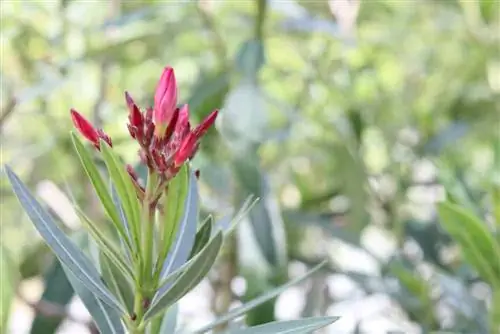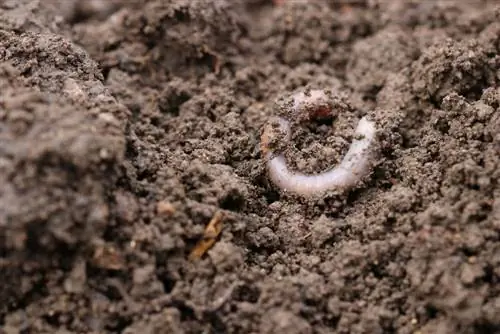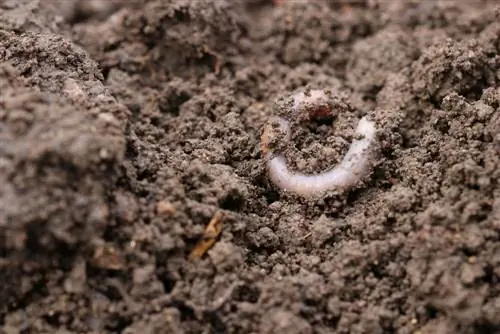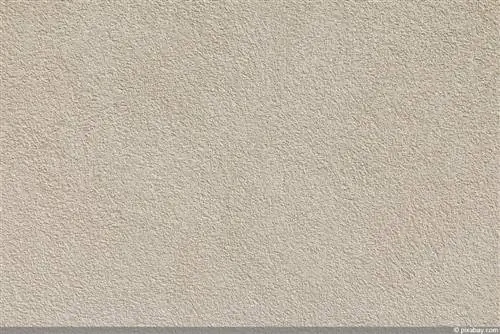- Author admin [email protected].
- Public 2023-12-17 03:39.
- Last modified 2025-01-24 12:45.
In the professional care of oleander, the timely change to a larger pot plays a key role. This measure is more common on a rapidly growing young plant than on a well-established, fully grown rose laurel. To ensure that the growth of the opulent ornamental shrub runs smoothly, the right date, the perfect substrate and the skillful approach play an important role. These instructions provide all the information you need to successfully repot your oleander.
Profile
- Assigned to the dogpoison family (Apocynaceae)
- Only species within the genus Nerium
- Name of the species: Oleander (Nerium oleander)
- Native to the Mediterranean, the Middle East and China
- Evergreen, intensely flowering shrub or tree
- Growth height in pot culture from 150 to 450 cm
- Leathery, dark green, shiny leaves, up to 25 cm long
- Five-fold, white, pink or yellow flowers in dense umbels
- Flowering period from May/June to September/October
- Common name: rose laurel
- Poisonous
The highly toxic cardiac glycoside oleandrin is present in all parts of oleander. Even ingesting a small amount of fresh leaves causes nausea, vomiting and cardiac arrhythmias. This fact should be taken into account in all care and planting work through appropriate safety measures.
The best date
Repotting means a lot of stress for every oleander. If the measure takes place in the middle of the summer flowering period, the change to a new pot can be acknowledged by the shedding of the flowers. Therefore, choose a date at the end of the winter break, shortly before the fresh shoots begin. As long as a young rose laurel is in the height-growing stage, it has rooted through its pot every year. Only when the flowering phase begins does the annual growth reduce, so that you no longer have to repot every year. A fully grown oleander is only replanted every 5 to 10 years.
The optimal soil
If you plant your oleander in potting soil from a discount store, you will look in vain for the magical flowers. The demanding ornamental tree requires a structurally stable, rich in nutrients and excellent water storage combined with permeability. A pH value of 5.8 to 7.0 is also of central relevance. If the rose laurel has met your expectations so far, please keep the substrate. Otherwise, use a high-quality pot plant soil from a specialist retailer or mix it yourself. The following recipe has proven itself very well in gardening practice:
- 5 parts standard soil with as little peat as possible
- 3 parts clayey garden soil
- 1 part inorganic components, such as sand, perlite, lava granules
- 1 part garden lime or vital lime
To cover the high nutrient requirements, add a special slow-release fertilizer to the soil. Oleander growers advocate COMPO Basacote Plus 12 M or a comparable product with an NPK formulation of 15+12+8. Mix in 3-5 grams of the coated fertilizer beads per liter of soil.
Tip:
To be sure that the oleander soil you mix yourself has the right pH value, a simple test with an indicator strip provides more information. The test strips are available in every hardware store and garden center and can be used without any prior chemical knowledge.
The right bucket
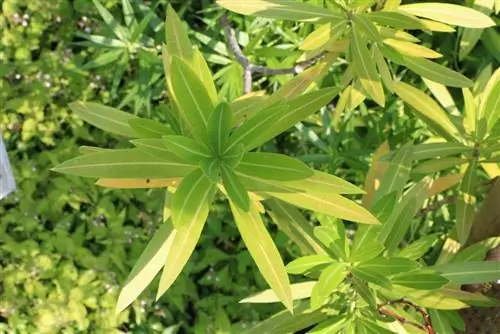
Use a container that is shaped so that the roots of an oleander can spread freely. The tree thrives as a shallow-rooted plant, so the perfect pot is more wide than deep. The diameter of the pot should be such that there is a maximum of 2 finger-widths of space around the root ball. If you choose the volume too large, the rose laurel will initially concentrate on rooting completely through the container. There is then only a little plant energy left for a magnificent flower and a dense foliage. An opening in the floor is essential so that excess irrigation water can drain away.
Preparatory work
Before starting the repotting work, carry out the following preparatory work:
- Place a potsherd curved upwards over the water drain in the ground
- Pour a thin layer of the substrate on top
- Water the root ball thoroughly and let it stand for an hour
- Loosely tie a large, richly branched oleander together with a rope
- Run an old bread knife between the wall of the pot and the bale to loosen the root strands
A thoroughly watered root ball is easier to remove from the old pot. Nevertheless, with a firmly rooted, adult rose laurel, you will hardly be able to do without a helping hand. With a helper holding the pot, grab the plant by the trunk and pull it out.
Tip:
Carry out all repotting work on your oleander with protective gloves. If there is direct skin contact with the toxic plant sap, painful rashes and allergic reactions can result.
Potting professionally
If the potted oleander is in front of you, take the opportunity to take a closer look at the root ball. If you notice dried, diseased or rotten root strands, cut them off with a clean, sharp knife. If it is a fully grown rose laurel, you can cut the root ball to the side and bottom so that it fits back into its original pot. Continue with this step:
- Shake off or rinse off the used soil completely
- Position the root ball in the middle of the fresh substrate
- Choose the planting depth so that the root disc is 5 cm below the edge of the pot
- Pour in the new soil in portions and press down occasionally so that no cavities are created
Please place the bucket in a high saucer and water the oleander thoroughly. On warm summer days, the thirsty ornamental tree is grateful if there is a small water reservoir in the saucer.
Repotting and pruning go hand in hand
If you repot your oleander in early spring, the window of opportunity for pruning is also open. If you use scissors in autumn, the flowering bush will sprout prematurely, which will impair successful overwintering. It is better if you combine both care measures after the winter break. How to do it right:
- After repotting, thin out the shrub or the crown thoroughly
- Cut off dried, dead branches at the base
- Short long branches to a maximum of the next bud
- Place the disinfected, sharp scissors 1-3 mm above a planted bud
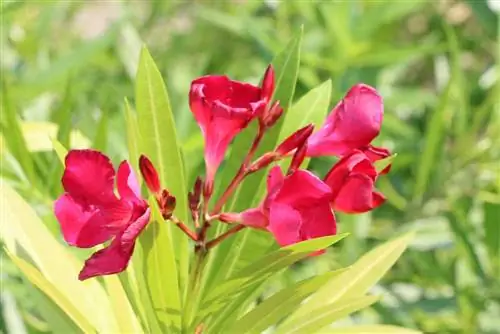
From the age of 5, the feared baldness can be prevented with targeted pruning measures. For this purpose, cut back 1 to 3 of the oldest shoots every year to a height of 10 cm. This creates space for new shoots and allows the sun's rays to reach all regions of the rose laurel again.
Conclusion
The lavish floral display is only repeated every summer if an oleander is repotted regularly. There is no trace of leisure on the young oleander until the first flower blooms, so switching to a larger pot is the order of the day every spring. If the rose laurel gets old, it is only repotted every 5 to 10 years. A structurally stable pot plant soil with a pH value of 5.8 to 7.0, enriched with vital lime and lava granules, ensures ideal conditions. If there is a helping hand available for unpotting and potting, the process is even easier. Experienced oleander gardeners combine the central care measure with thorough thinning and light pruning. If you use this information at the right time, the best soil and skillful planting technique, the oleander will thank you for your care with a never-ending flower festival until autumn.

